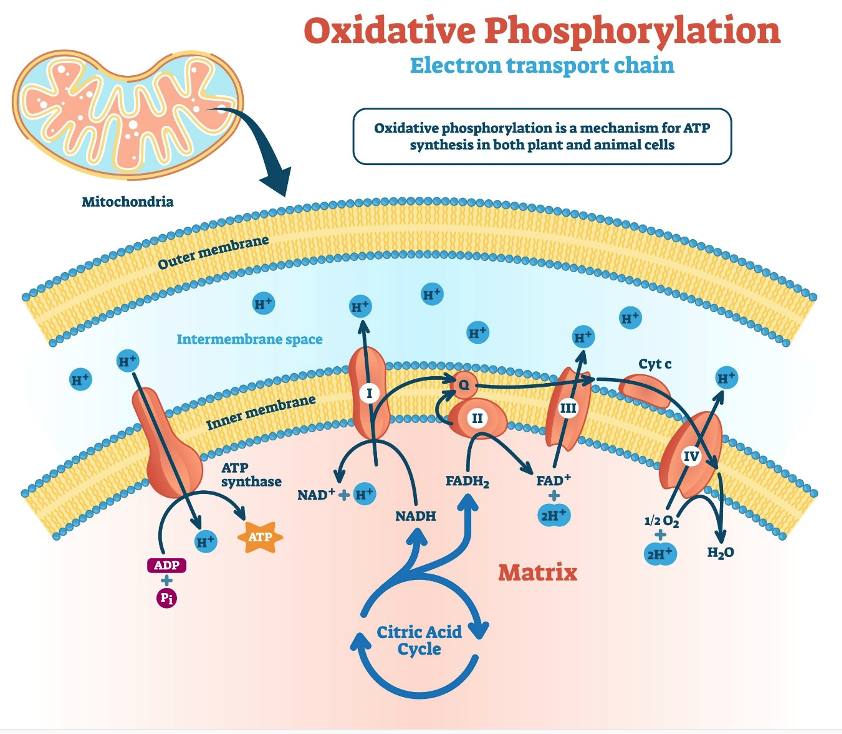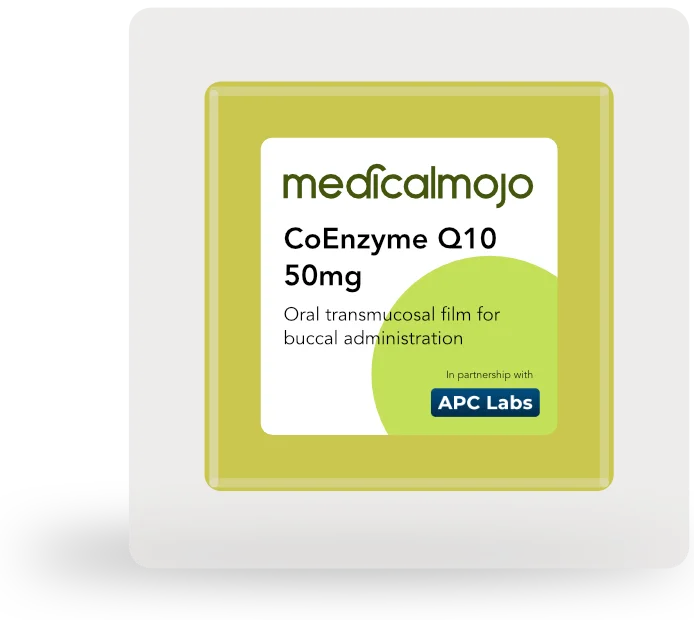If you are trying to get pregnant, then you want to stack the odds in your favour. But basically, it all comes down to one thing, energy. If we don’t have enough energy, the cells in our body cannot function optimally and this goes for oocytes or eggs in women.
Studies have demonstrated that CoQ10 provides vital energy for the eggs, aiding in their maturation and improving embryo quality. This stored energy fuels embryo development, supporting its growth from fertilisation to implantation during the first 7–10 days. It also plays a key role in ensuring proper chromosome replication, contributing to a healthy pregnancy. Studies suggest that CoQ10 supplementation can significantly boost the chances of a successful pregnancy. In this article we will go into depth and look at the research behind these claims and try to answer the questions, should you take Coenzyme Q10 to help you get pregnant when should you stop taking CoQ10 for fertility?
Let’s first summarise the benefits of Coenzyme Q10 with regard to pregnancy for those of you who are not able to digest the whole article.
Benefits of CoQ10 for pregnancy:
- Promotes healthy eggs
- Improves embryo quality
- Prevents chromosomal defects
- Increases successful pregnancies
Fertility of women in their 30s
As women age, their ability to have children declines significantly, especially after their 30s, due to a decrease in both the quality and number of eggs. Although the exact reasons are still not precisely known, several researchers have proposed that this decline is due to the ageing process causing mitochondrial dysfunction in the oocytes or eggs in older women [1]. Remember, mitochondria are the power stations within cells and are responsible for creating the energy currency in the body, ATP. So, without enough energy or ATP, cells are not able to perform the tasks allotted to them. No energy equals no work, which is exactly how I feel on Monday mornings…that is until I discovered CoQ10, but more on that later. Since CoQ10 is an essential component of the electron transport chain within the mitochondria it begs the question, can supplementing with this vitamin-like compound help maintain fertility in older women? Then if we assume that it does, then when is it best to stop taking CoQ10 for fertility? These are the questions that this article seeks to address, so buckle up and get ready to learn about the exciting new research regarding Coenzyme Q10 and fertility.
Older women have lower levels of CoQ10.
In both mice and humans, older females have reduced levels of two key enzymes, Pdss2 and Coq6, which are essential for producing CoQ10, a molecule vital for energy production in cells [2]. For anyone who wants to know more about these two enzymes (I am sure I can’t be the only one), I have written two short bullet points. For the rest of humanity, you can skip to the next paragraph.
- Pdss2 (Prenyldiphosphate Synthase Subunit 2) helps create the long tail portion of the CoQ10 molecule, which is necessary for its function in the mitochondria. Without enough Pdss2, the body cannot produce sufficient CoQ10, leading to decreased energy production in cells.
- Coq6 modifies the ring structure of CoQ10, which is crucial for its role in energy production through oxidative phosphorylation in the mitochondria. A lack of Coq6 results in improperly formed CoQ10 and reduced energy output in cells.
Can taking CoQ10 increase the quality of eggs in older women?
The good news is that supplementing with CoQ10 helped improve the quality and number of eggs in older females. In experiments where the gene responsible for making CoQ10 was blocked, the eggs showed many of the same problems seen in ageing, such as lower energy production and issues with cell division, leading to infertility. However, these problems were reversed with CoQ10 supplements, suggesting that low CoQ10 levels contribute to age-related fertility issues, and boosting it can help improve reproductive health [3].
Why do older women become infertile?
Female fertility is one of the first bodily functions to be affected by ageing. Fertility starts to decline around the age of 32 and drops more sharply after 37 [4]. Even though women continue to ovulate, the likelihood of conception decreases with age [5]. While hormonal and uterine factors play a role in this decline, the main issue seems to be a drop in egg quality. As women get older, changes happen at the molecular level that affect how chromosomes separate and align during cell division, leading to fertility problems [6]. However, despite these breakthroughs in our understanding, they have not, unfortunately, resulted in any effective treatments to improve live birth rates in older women.
Reduction of ovarian reserve in older women
As women age, their reproductive capacity declines and this is linked to a reduction in the number of eggs (ovarian reserve). For some reason, the loss of the ovarian follicles is gradual but then after reaching the age of 38 [7], a woman experiences an accelerated loss. So, apparently, the number 38 could hold more significance to the meaning of life than 42- for all you fans of a certain book.
The reason why the loss of eggs speeds up after the age of 38, is not well understood but a possible cause is the increased DNA damage due to the body’s reduced ability to repair itself as it ages. Before ovulation, eggs go through a complex maturation process involving changes in the nucleus, cytoplasm, and chromosomes. This process requires a lot of energy, which is mostly provided by the mitochondria through a process called oxidative phosphorylation [8]. So, it stands to reason that if there is not enough energy in the egg then it will impact its ability to develop into a healthy embryo. When mitochondria do not function well or energy production is disrupted, it can stop the egg from maturing properly, causing issues with chromosome alignment and embryo development [9].
How energy is made in the mitochondria
We have talked a lot about energy and ATP, so I think it’s about time we had a quick revision to remind ourselves how all this is made in the mitochondria. The following paragraph is quite technical, so if you don’t speak fluent nerd, skip a paragraph for the normal human version.
Oxidative phosphorylation is the name of the process of ATP production in the mitochondria and involves a series of five protein complexes which are embedded in, or close to the inner membrane. Complexes I and II take products from the cell’s energy cycle (TCA cycle) and pass electrons to ubiquinone, also known as coenzyme Q10 (CoQ10). The electrons then move through Complexes III and IV, which creates a proton gradient that Complex V uses to generate ATP, the cell’s main energy source. CoQ10 plays multiple roles in this process, acting as an antioxidant, managing cellular oxidation levels, influencing signalling pathways, and helping control cell functions. It’s also essential for the proper function of a key enzyme, succinate dehydrogenase [10].
How energy is made in the body…the non-nerd guide
Think of mitochondria as the body’s power stations, but instead of producing electricity, they generate ATP molecules, which act like volts of electricity. Now, let’s take this analogy a step further. Imagine the inner membranes of the mitochondria as containing hundreds of hydroelectric plants. These are equivalent to the protein complexes we mentioned in the nerd version above. Let’s quickly refresh how hydroelectric dams work: a reservoir, usually high up on a mountain, stores water held back by a dam. When the water is released, it flows downhill due to gravity, turning a turbine that generates electricity.
Now, keep this image in mind and replace the water with protons and the turbines with ATPase (the smallest known molecular machine, which actually rotates like a turbine to generate energy). This gives you a rough idea of how energy is made in the body. Finally, think of Coenzyme Q10 as a series of large buckets that carry the water (protons) to the top of the dam. If there are fewer buckets—or worse, none—there’s no way to refill the reservoir, and eventually, there’s no water left to generate energy. In the body, without enough CoQ10, there’s little to no energy production.
To help visualise all this, here is a nice, complicated diagram.

CoQ10 levels in older women
Several studies have shown that CoQ10 levels in certain tissues decline as we age [11]. The process of making CoQ10 in the body is complex and involves at least 10 different enzymes. CoQ10 is made up of two main parts: the ring, which comes from amino acids like tyrosine or phenylalanine, and the tail, which is made using acetyl-CoA. Genes like Pdss1 and Pdss2 help in making these parts. Once the ring and tail are put together by an enzyme called COQ2, other enzymes (Coq 3, 6, and 7) make small changes to ensure CoQ10 works properly. All these parts come together in the mitochondria to help produce energy. Isn’t it amazing to think that all of these complicated reactions are occurring now in our bodies as we speak?
Does taking CoQ10 slow down the loss of eggs in older female mice
As with a lot of science, initial work is carried out in mice because they have shorter lifespans and we can see the results, that would otherwise take years to observe in humans, in a matter of months. Ben?Meir, A. [3] demonstrated in a study carried out in 2015 that giving CoQ10 to older animals slowed down the loss of their egg supply, restored important mitochondrial gene activity in their eggs, and improved overall mitochondrial function. They found that this led to more eggs being released, better egg development and more offspring being born.
The researchers then went one step further to find out what would happen when the Pdss2 gene, which is important for CoQ10 production, was disrupted. Not surprisingly they discovered that when this gene was disrupted, it caused many of the same issues seen in ageing eggs, like mitochondrial dysfunction and fertility problems. However, these problems were reversed when the animals were given CoQ10. Interestingly, CoQ10 did not have any effect on the egg supply or quality in young animals, suggesting that it mainly helps when mitochondrial function is already compromised due to ageing.
Can supplementing with CoQ10 help with fertility in older women?
In humans, CoQ10 levels start to decrease in certain tissues after the age of 30, and this might play a role in the ageing process. The decline in CoQ10 seems to happen around the same time as fertility decreases and the risk of embryo abnormalities increases. Studies have even shown a link between low CoQ10 levels in the blood and higher rates of miscarriage [12). Additionally, higher levels of CoQ10 in the fluid around eggs are associated with better egg maturation and embryo quality during IVF treatments. The findings in Ben-Meir’s excellent paper suggest that eggs are the main beneficiaries of CoQ10 supplementation, but it’s also possible that other cells, like those in the ovaries or uterus, could benefit too, helping improve overall fertility in women taking CoQ10.
Since CoQ10 supplementation improved fertility outcomes, slowed follicle loss, and boosted mitochondrial function in older animals, it’s reasonable to suggest that CoQ10 supplements could help women trying to conceive later in life. However, there are significant differences between ageing in mice and humans—especially since a few months in mice is equivalent to many years in humans. It’s unclear if CoQ10 alone could undo the effects of decades of environmental exposure on human eggs. More large-scale studies are needed to determine the proper dosage, treatment duration, and safety before CoQ10 can be used in clinical settings for fertility.
CoQ10 Safety During Pregnancy
OK, it may sound strange that we have been talking about how CoQ10 helps get you pregnant but unfortunately, there is less research about the safety of taking this supplement during pregnancy. Research suggests that CoQ10 has low toxicity, and potential adverse effects typically only occur after long-term exposure to high doses. Studies also show that CoQ10 generally doesn’t cause serious side effects in humans.
While CoQ10 is likely safe to use during pregnancy, there isn’t much specific research available on the subject. Therefore, it’s recommended that anyone considering CoQ10 supplementation during pregnancy consult their healthcare provider before starting.
CoQ10 and Pre-eclampsia During Pregnancy
For some women, CoQ10 may offer benefits and help protect against conditions like pre-eclampsia during pregnancy.
Pre-eclampsia is a pregnancy complication that typically develops around the 20th week. It involves high blood pressure and signs of organ damage. If untreated, pre-eclampsia can lead to severe, potentially life-threatening complications for both the mother and baby [12].
In one study, researchers looked at how CoQ10 supplementation affected women at higher risk for developing pre-eclampsia. Participants were divided into two groups: one receiving 200 mg of CoQ10 and the other a placebo. The treatment continued from the 20th week of pregnancy until delivery.
The overall rate of pre-eclampsia in the study was 20%. In the placebo group, 25.6% of women developed pre-eclampsia, compared to only 14.4% in the CoQ10 treatment group.
Researchers concluded that the difference between the two groups was significant, showing that CoQ10 supplementation reduced the risk of developing pre-eclampsia [13].
Why Take CoQ10 Supplements?
CoQ10 is critical for cellular energy production, but natural CoQ10 levels begin to decline after the age of 20. Research shows that CoQ10 supplementation positively impacts pregnancy success, particularly for women over 35.
How Long Do You Need to Take CoQ10 Supplements?
It’s never too late to start! Since eggs take about 90 days to mature before ovulation, it’s best to continue CoQ10 supplementation for at least three months to achieve optimal results. The great news is that CoQ10 not only supports your eggs but also benefits the health of all your cells, with its effects increasing over time. You can continue taking CoQ10 until you become pregnant, at which point you may reduce or stop supplementation.
When should I stop CoQ10 for fertility?
There has been plenty of research on the role of CoQ10 and fertility, but precious little concerning its safety in pregnancy. The doses taken to aid with conception are usually higher and taken for a prolonged period of time. Although generally, CoQ10 is safe, if it was toxic why would the body make its own supply? However, given the scarcity of robust data, it is best to consult with your doctor or health professional responsible for your care concerning when to stop or taper down the dose of coenzyme Q10.
What CoQ10 Should I Take for Fertility?
If you’ve been researching CoQ10 for fertility, you’ve probably come across the terms ubiquinone and ubiquinol. These terms describe whether the CoQ10 has gained electrons (ubiquinol) or lost electrons (ubiquinone).
Should I Take Ubiquinol or Ubiquinone for Fertility?
The most common form of CoQ10 is ubiquinone, which the body converts into ubiquinol. While some people choose ubiquinol because it’s the active form, most of us already have the enzyme that converts ubiquinone into ubiquinol. The main advantage ubiquinol has over ubiquinone is that it’s better absorbed.
Both forms are fat-soluble, with ubiquinol offering better absorption in standard oral supplements like capsules. However, at Medicalmojo.co.uk, we’ve partnered with a compounding pharmacy to create a soluble oral patch that delivers CoQ10 through the buccal cavity inside the mouth.
Buccal Drug Delivery of CoQ10
The CoQ10 soluble oral patch is placed on the inside of your cheek, where it then dissolves. This method bypasses the stomach and intestines, delivering CoQ10 directly into the bloodstream for faster and more efficient absorption—kind of like a VIP pass straight into your circulation! This means more CoQ10 is absorbed and less is wasted.
Check out our range of patches to learn more about the Medical Mojo CoQ10 50mg soluble oral patch, and watch the video below for instructions on how to use it.
How Much CoQ10 Should I Take Daily for Fertility?
Most people get about 3mg to 6mg of CoQ10 daily from foods like red meat, oily fish, legumes, and vegetables such as broccoli and spinach. For fertility support, experts recommend taking between 100mg and 600mg of CoQ10 daily. However, since our soluble oral patch offers better absorption, two to four patches per day should be enough to reach optimal CoQ10 levels.

References:
- Bentov Y, Yavorska T, Esfandiari N, Jurisicova A, Casper RF (2011) The contribution of mitochondrial function to reproductive ageing. J. Assist. Reprod. Genet. 28, 773–783.
- Yen, H.C., Yeh, W.Y., Lee, S.H., Feng, Y.H. and Yang, S.L., 2020. Characterization of human mitochondrial PDSS and COQ proteins and their roles in maintaining coenzyme Q10 levels and each other’s stability. Biochimica et Biophysica Acta (BBA)-Bioenergetics, 1861(7), p.148192.
- Ben?Meir, A., Burstein, E., Borrego?Alvarez, A., Chong, J., Wong, E., Yavorska, T., Naranian, T., Chi, M., Wang, Y., Bentov, Y. and Alexis, J., 2015. Coenzyme Q10 restores oocyte mitochondrial function and fertility during reproductive ageing. Aging cell, 14(5), pp.887-895.
- O’Connor KA, Holman DJ, Wood JW (1998) Declining fecundity and ovarian ageing in natural fertility populations. Maturitas 30, 127–136.
- te Velde ER, Pearson PL (2002) The variability of female reproductive ageing. Hum. Reprod. Update 8, 141–154.
- Chiang T, Schultz RM, Lampson MA (2011) Age-dependent susceptibility of chromosome cohesion to premature separase activation in mouse oocytes. Biol. Reprod. 85, 1279–1283.
- Faddy MJ (2000) Follicle dynamics during ovarian ageing. Mol. Cell. Endocrinol. 163, 43–48.
- Dumollard R, Ward Z, Carroll J, Duchen MR (2007) Regulation of redox metabolism in the mouse oocyte and embryo. Development 134, 455–465.
- Takeuchi T, Neri QV, Katagiri Y, Rosenwaks Z, Palermo GD (2005) Effect of treating induced mitochondrial damage on embryonic development and epigenesis. Biol. Reprod. 72, 584–592.
- Crane FL (2001) Biochemical functions of coenzyme Q10. J. Am. Coll. Nutr. 20, 591–598.
- Miles MV, Horn PS, Tang PH, Morrison JA, Miles L, DeGrauw T, Pesce AJ (2004) Age-related changes in plasma coenzyme Q10 concentrations and redox state in apparently healthy children and adults. Clin. Chim. Acta 347, 139–144.
- Fox R, Kitt J, Leeson P, Aye CYL, Lewandowski AJ. Preeclampsia: Risk Factors, Diagnosis, Management, and the Cardiovascular Impact on the Offspring. J Clin Med. 2019 Oct 4;8(10):1625. doi: 10.3390/jcm8101625. PMID: 31590294; PMCID: PMC6832549.
- Teran E, Hernandez I, Nieto B, Tavara R, Ocampo JE, Calle A. Coenzyme Q10 supplementation during pregnancy reduces the risk of pre-eclampsia. Int J Gynaecol Obstet. 2009 Apr;105(1):43-5. doi: 10.1016/j.ijgo.2008.11.033. Epub 2009 Jan 19. PMID: 19154996.


